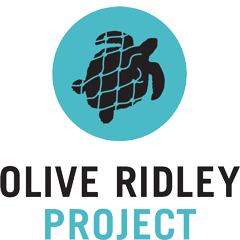
Welcome to the second edition of Let’s Talk Turtles! In this edition, we’ve got a little bit of everything – exciting new research and medical therapy practice, some good news, important reminders, a possible mystery, and heartwarming stories of both children and adults making a difference. Thank you for joining us on this important journey. Together, we can make a lasting impact for sea turtles and the ecosystems they call home. If you are not already subscribed, you can do so here.
Research deep dive:
The kids are alright: Juvenile sea turtles dominate Musandam waters
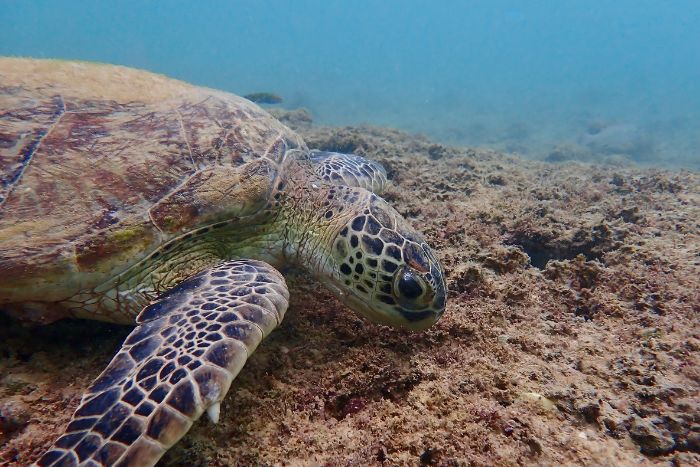
Did you know that Oman has the largest number of nesting green sea turtles in the Indian Ocean?
However, at Musandam – our field site in Oman – nesting has been sporadic, likely due to the scarcity of sandy beaches. While the Musandam’s rocky, mountainous peninsula with deep fjords may not make for suitable nesting grounds, its sheltered bays off the coast can serve as important habitats for sea turtles. The northern Khasab region, for example, is rich in Halodule and Halophila seagrass species, known green turtle food sources.
But that’s not all! Musandam’s location at the mouth of the Strait of Hormuz also makes it ecologically significant. Sea turtles nesting on Masirah Island (South of Musandam) have been tracked swimming through this region, suggesting Musandam might serve as an important corridor for migrating sea turtles. While Masirah, a known nesting site, has been well studied, Musandam’s in-water sea turtle population has remained a mystery.
This is where our work comes in. From 2019 to 2023, ORP’s sea turtle biologists, based at Six Senses Zighy Bay, supported by extra divers, conducted underwater surveys to study sea turtles in Musandam. Our findings, published in Chelonian Conservation Biology, mark the first-ever in-water sea turtle study in this region.
Unlike nesting beach studies, which mostly depend on tagging adult females, we use a non-invasive method called Photo-ID which involves taking photos of sea turtles’ unique facial scale patterns to identify individuals over time without tagging or disturbance. So what did the study show?
The results of the study were as scientifically compelling as they were heartwarming. Here’s a quick look:
- Teenage sea turtles: A whopping 94% of the sea turtles we identified were juveniles – think of them as teenagers! Their presence means Musandam offers suitable feeding and resting spots for growing sea turtles.
- Adult turtles: We only recorded 10 adults, 6 greens and 4 hawksbills. This suggests that adult sea turtles might just be swimming through the area, and not stopping by to forage or rest. Scientists believe adult sea turtles often travel straight between their main feeding grounds and nesting beaches without much foraging in between.
- A few regulars: Interestingly, nearly half of all our sightings (46%) were of just 19 sea turtle individuals. This suggests a small, resident population of sea turtles that are sticking around, showing high site-fidelity.
- Many Visitors: Most sea turtles (112 individuals) were seen only once or twice, indicating a transient or mobile juvenile population. This tells us that many sea turtles are likely just passing through Musandam. Either they don’t stay for long, or the reef can only support a certain number of sea turtles at a time.
Why does this study matter? This is the first-ever baseline study of sea turtles in the waters around Musandam. It gives us a better understanding of how sea turtles – specially a juvenile population – use this area and shows that simple tools like Photo-ID are a powerful way to track and study sea turtle populations over time.
How can you help? There’s huge potential for citizen scientists such as divers, snorkelers, and ocean enthusiasts to contribute to this study. If you’re lucky enough to spot a sea turtle in Oman, your photos could help us learn more about these amazing animals and and protect them. To become citizens scientists, contribute your photos at: seaturtleid@oliveridleyproject.org
Positive news: Are sea turtles making a comeback?
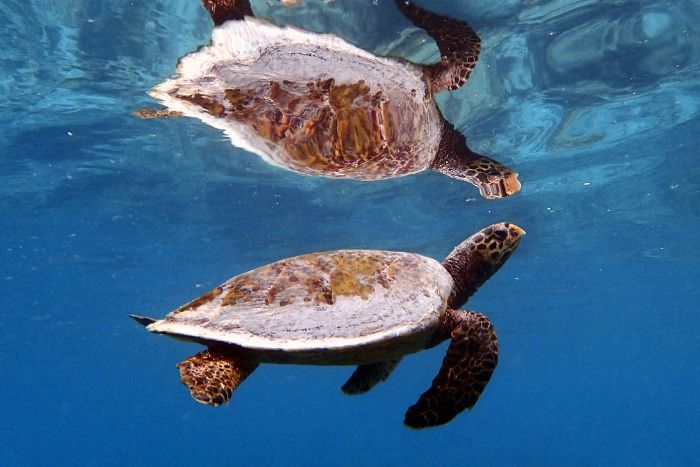
A new global study by the IUCN Marine Turtle Specialist Group of 140+ researchers – including members of the ORP team – brings a mix of good news along with some important reminders for sea turtle conservation.
The study used a framework called Regional Management Units (RMUs) to assess sea turtle populations. This approach groups sea turtles not just by species but by the geographic regions they inhabit, including their nesting beaches, feeding grounds, and migration routes. Because sea turtles within an RMU share a region, they often face the same threats and population trends, and therefore are evaluated together.
Now the biggest news from this study is positive: the overall conservation status of sea turtles is improving! Almost three-quarters of the sea turtle populations showed improvements since the last review in 2011, when evaluated by risk and present threats. In fact, 40% of the populations were found to be at low risk facing low threats. Our particular favourite green turtles are especially showing signs of recovery in several regions. For example, in Mexico, green turtles have been protected from harvest since 1990. The East Pacific green turtle populations are responding well to protection measures, with numbers rising and reaching levels not seen in over 50 years. This indicates that long-term conservation efforts are paying off.
But not all species are faring as well. Every leatherback turtle population in the study was found to be at high risk. The Northwest Atlantic leatherback, once recorded as least concern, is now listed as endangered.
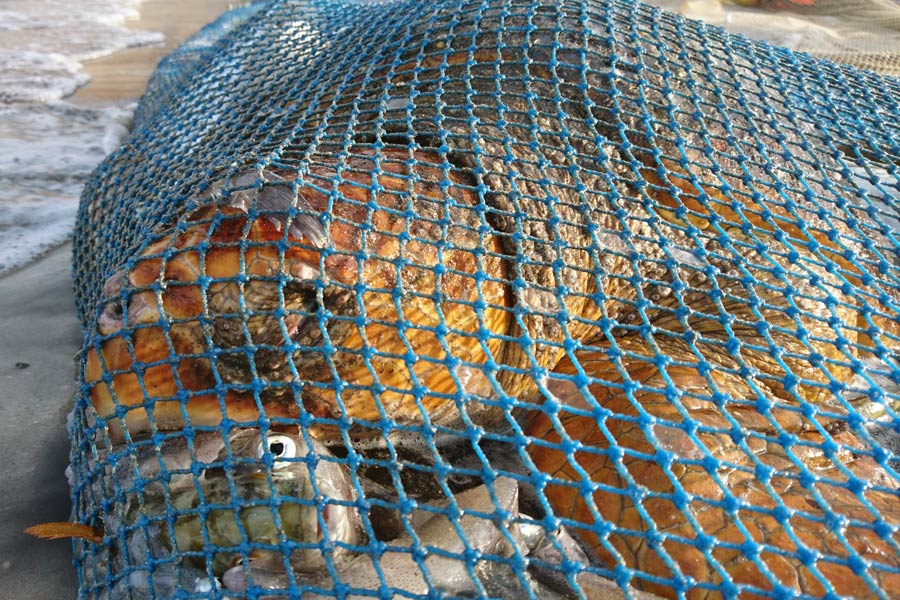
The biggest global threat to sea turtles is still fisheries bycatch, which is when sea turtles are accidentally caught in fishing gear or nets. It’s a particularly tough problem to tackle in poorly monitored or illegal fisheries. Another growing concern is climate change, and while research on the threat has increased, we still don’t fully understand how it affects sea turtles. Meanwhile, we lack critical data on many sea turtle populations, particularly in the Indian and Pacific Oceans, and on adult male and immature sea turtles, who make up a majority of the population but are often left out of monitoring.
The study is a reminder that while science and long-term action are paying off, the future of sea turtle conservation depends on more than just research. Resources, leadership, and decision-making must be shared more fairly, especially with local communities in lower-income countries where many key sea turtle habitats are found. The researchers call for more collaboration between countries, regular updates to the RMU framework, and a stronger push to fill knowledge gaps. If that happens, sea turtle conservation practice will become fairer, more resilient and stronger in ensuring a safe future for these incredible creatures.
Field diaries:
Six nests, one sea turtle mama? A curious pattern emerges on North Malé Atoll
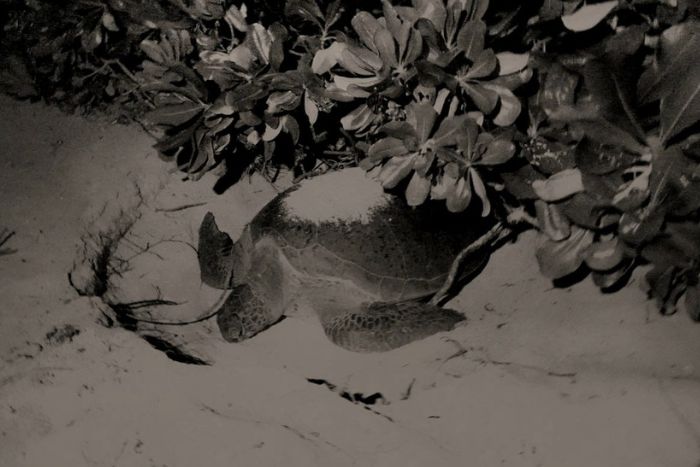
This year’s nesting season surprised us in the best way. Not only did we see record-breaking nesting activity on our quiet North Malé island, where we usually spot just one or two nests every few years, but something about the timing made us pause.
Six green turtle nests, including three laid between April and May, were all spaced exactly 10 days apart.
Nesting intervals like this are characteristic of individual sea turtle females returning to lay multiple clutches in a single season. So was it the same mama turtle? While we cannot claim this for sure, we were lucky enough to capture Photo-ID of the green turtle mama who laid the last nest, so there’s a real chance we’ll be able to confirm if she returns in future seasons.
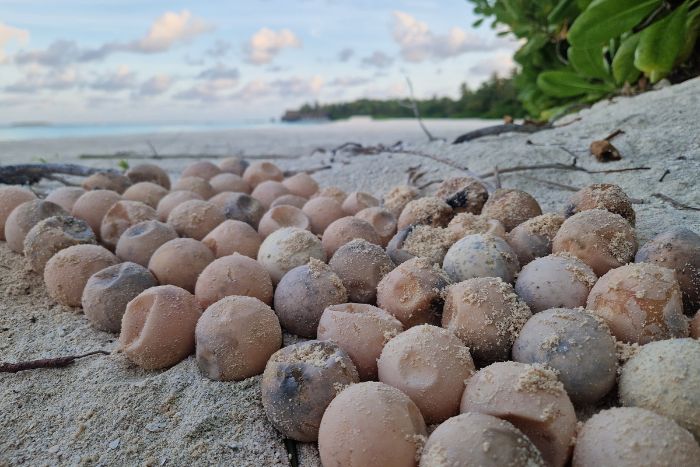
After the hatching of each of the six nests, we conducted our usual nest excavations to study the contents of the nest and rescue any possible stragglers. In total, 652 eggs were laid and 316 hatchlings emerged from these nests, giving us a hatching success rate of 49.44%. Unfortunately, we observed a high number of undeveloped eggs across all six nests. This could possibly point to reproductive stress or environmental challenges affecting the nesting female, but this can only be confirmed by either lab-testing the contents of the egg or studying the health of the nesting turtle.
We rarely get such a clear glimpse into what might be a single sea turtle’s full nesting cycle in the Maldives. This season has given us valuable insight and some new questions too. Sea turtles never stop surprising us, serving us a strong reminder of how much there is still to learn, and why it’s so important that we keep observing, recording, and protecting these incredible creatures along with their habitats.
Did you know?
With each sea turtle nest containing anywhere between 60-120 eggs, not all of them hatch into baby sea turtles, some instead exhibit hatching failure. But why do these eggs remain unhatched, and should we even care? Eggs hatching successfully is key to ensuring population renewal afterall. Learn more by tuning into Episode 2 of Sea Turtle Stories: ‘Eggsploring Hatching Failure’.
Injured but not without hope – Noora’s fight for recovery aided by cutting-edge treatment
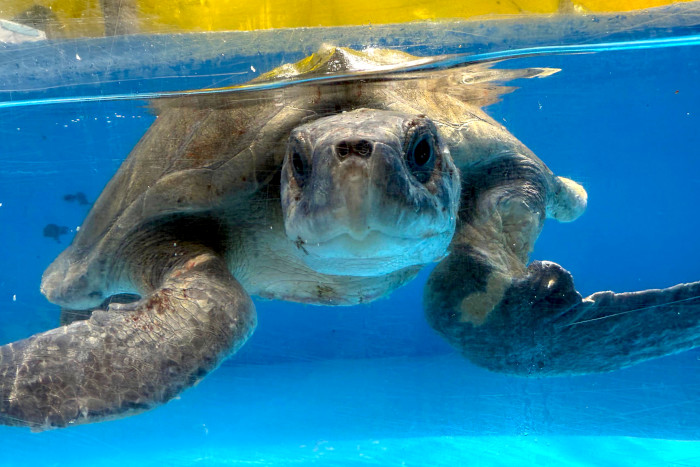
Noora, a juvenile olive ridley, came to our Rescue Centre with extensive trauma – ligature injuries on all four flippers, multiple fractures, including a severe one on her left front flipper, lung trauma, and signs of internal infection. The evidence pointed to a likely entanglement in ghost gear, or a possible strike by some large object.
To support Noora’s recovery, we started her on a cutting-edge treatment – Platelet Rich Plasma (PRP) therapy. Here is how it works:
PRP therapy is a regenerative treatment that uses the sea turtle’s healthy blood to help accelerate healing in damaged tissues. Here’s how it works. We collect a small amount of Noora’s blood, which is specially processed to produce plasma enriched with platelets. Next, this concentrated plasma is carefully injected into the area of the injury, where it speeds regeneration of new cells and tissue.
It’s a delicate and innovative approach – one that offers real hope for sea turtles with complex injuries from entanglements in marine debris and fractures like Noora’s.
In some good news, Noora is showing remarkable spirit. She’s active and has a healthy appetite, which is a promising sign in a sea turtle patient. Her recovery will take time, especially as broken flippers are slow to heal, but with her strength and our dedicated care, we’re hopeful she’ll one day return to the ocean.
Shell-ebrating nature: Snapshots from across the world
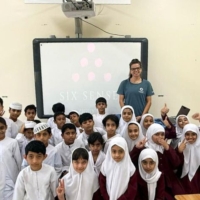
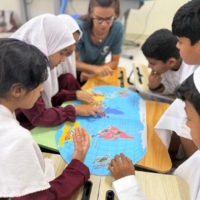
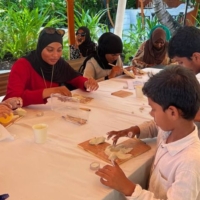
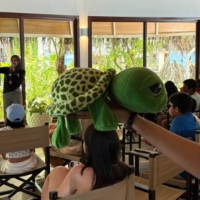
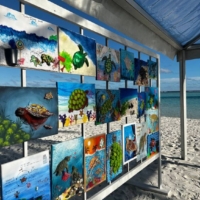
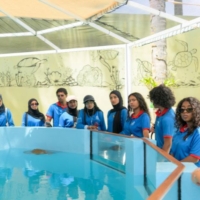
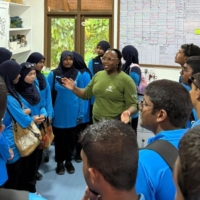
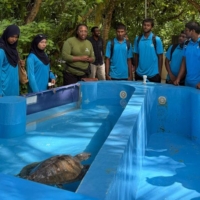
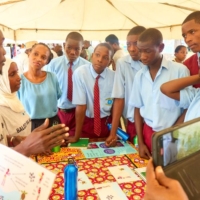
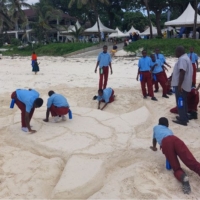
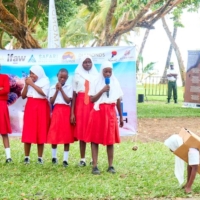
(Click on image to enlarge)
The last few months felt like a string of birthdays, no not for us, but for the planet and the turtles we love. Between World Earth Day, World Turtle Day, and World Sea Turtle Day, it was one celebration after another. And what are these special days without a party!
So our team showed up across locations with gifts: curious children, dances and activities, sea turtle talks and a celebratory spirit. These global days are a big deal for us, giving us the chance to pause, reflect, and throw a little party for nature. The celebrations remind us and the larger community – that we should be glad to be here, doing this, together!
Turtle crew:
Turtle trailblazer! Dr Misfah joins us as the first Maldivian veterinary trainee
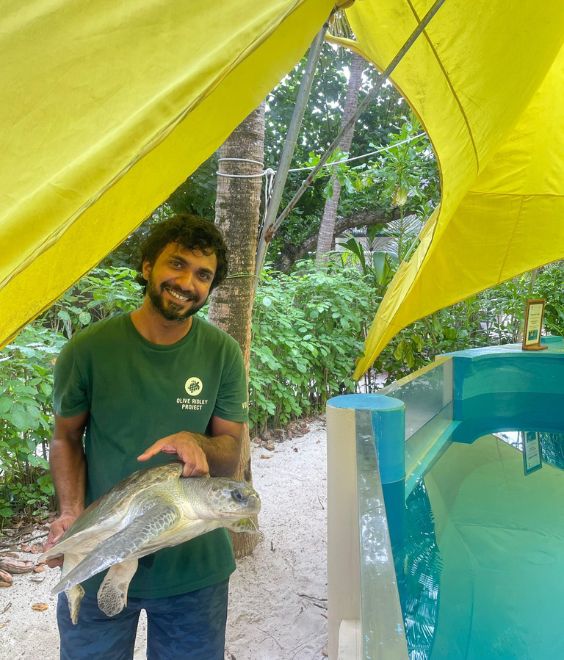
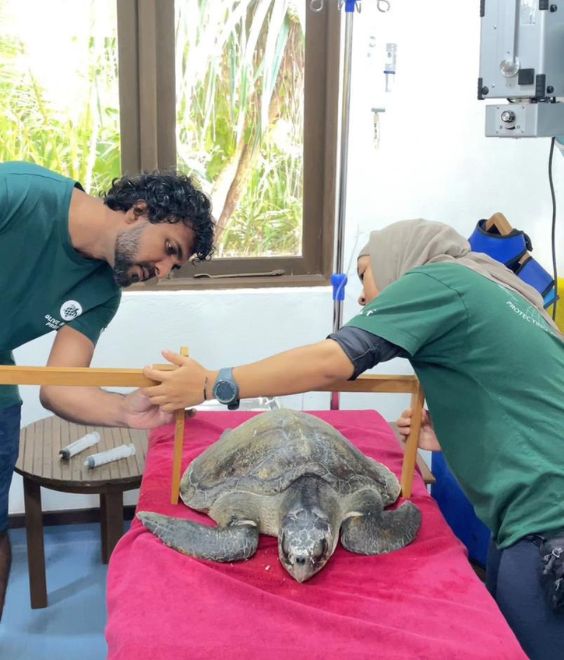
“Sea turtle medicine is incredible, but don’t expect turtles to cooperate. Their favourite position is: anywhere but where and how you want me to be“, chuckles Dr. Hussain Misfah (Mikki), our first veterinary trainee for 2025. His fondness for our sometimes unruly sea turtle patients is obvious.
Currently working with the Ministry of Agriculture and Animal Welfare, Dr. Misfah is the first and only practising Maldivian veterinarian in the country.
“I am a veterinarian working in both the private and public sectors in the Maldives, with a strong interest in exotic wildlife medicine. So when this opportunity to train in sea turtle medicine and health came along, I was excited to participate.” says Dr Misfah, who spent two weeks with us at the Marine Turtle Rescue Centre, receiving training in sea turtle rescue and conservation medicine.
“It was a pleasure to take part in the ORP Veterinary Training Program. I had the chance to learn a great deal about sea turtles, other marine animals, and wildlife medicine. The experience was very hands-on, informative, and a lot of fun. I’d definitely recommend it to anyone interested in learning more about turtles and how to work with them”, he says.
We are thrilled to have been a part of Dr. Misfah’s professional journey, and can’t wait to welcome more passionate veterinarians into the programme as we continue into 2025.
Voices for conservation:
Conservation, reclaimed: The power of local voices in Kwale, Kenya
When we think of conservation, the image that often comes to mind is that of a scientist with a clipboard, speaking in terms that feel familiar yet out of reach. And while science is vital, conservation, especially in the Global South, is also a lived, everyday practice carried out by community leaders, teachers, rangers, and even children. These are the people who live closest to nature, and more often than not, they are its most committed and effective guardians.
Thankfully, global conservation practice is starting to reflect this reality. There’s a growing understanding that top-down interventions aren’t enough and that real, lasting change comes from locally driven approaches. At ORP, with our roots in the Global South, we maintain that conservation must prioritise inclusion and local leadership, with many of our programmes reflecting this belief.
ORP Kenya’s “Balozi wa Kasa” Programme, Swahili for sea turtle ambassador, is one such example. Through this initiative, we collaborate with self-nominated members from nine fishing communities to monitor sea turtle bycatch, raise awareness about sea turtles and marine environments, as well as strengthen local capacity to protect these crucial ecosystems which support local livelihoods. Thanks to a grant from Ocean Culture Life and the Ocean Born Foundation, we were recently able to document this incredible community-led effort and hand the microphone over to the communities themselves.
The result is ‘Sauti Za Kwale’ (Voices of Kwale), a documentary that centres the stories of sea turtle ambassadors from four fishing communities in Kwale County on Kenya’s South Coast. These local champions, with help from our educational outreach team, are now leading first-response sea turtle rescues, research data collection, and community education.
Most importantly, this film reminds us to listen. In the rush to solve environmental crises, perspectives from the margins are often drowned out. Voices of Kwale challenges this pattern by celebrating the agency and insight of local communities. By hearing directly from the people of Kwale, especially those actively involved in protecting their marine ecosystems, we reimagine conservation not as something done to communities, but done with and led by them. The result is a more resilient movement, not only for sea turtles, but for the people who share their lives with them.

